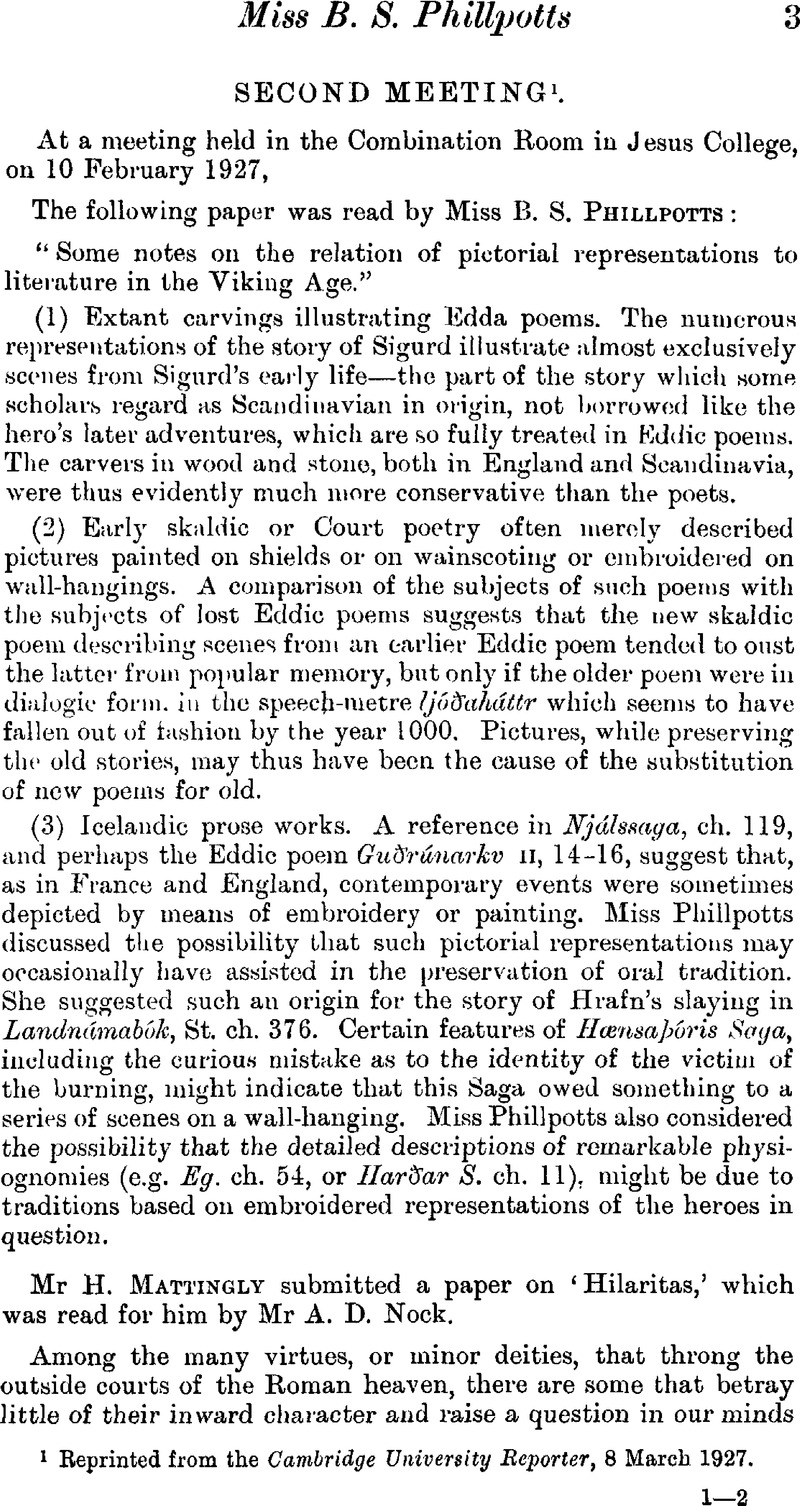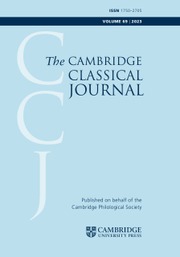No CrossRef data available.
Article contents
Abstract

- Type
- Lent Term, 1927
- Information
- Copyright
- Copyright © The Author(s). Published online by Cambridge University Press 1928
References
page 4 note 1 Frochner, in an able but perverse article in Rer. Num. 1907, pp. 353 ff.Google Scholar, tried in vain to prove that there was no such person.
page 4 note 2 Cp. Vopiscus, , Life of Aurelian, IGoogle Scholar, Hilaribus, quibus omnia festa et fieri debere scimus et dici… The minor ‘Hilaria’ held in the autumn (Nov. 3rd) must not be left out of account: it was connected with the worship of Isis. Graillot, in his book, seems to assume that the ‘Hilaritas’ type is connected with the Hilaria. I am endeavouring to prove and develop the idea.
page 5 note 1 Cp. denarius of C. Fabi C. f. c. 114 B.C., of M. Volteius, c. 82 B.C., of M. Plaetorius Cestianus, aed. cur. ex S.C., c. 68 B.C., of A. Plautius, aed. cur. S.C., c. 58. B.C., aureus of Norbanus and Cestius, 44 B.C.; the very rare denarius of Cethegus, c. 115 B.C., perhaps shows Attis riding on a goat, on the reverse.
page 5 note 2 Claudius was probably the first to give an official position to the March festivals (cp. Lydus, Ioannes, De Mensibus, IV, 59, p. 113Google Scholar. 9 Wünsch).
page 5 note 3 Cp. the taun obolia performed ‘pro salute Caesaris Augusti et domus divinae.’
page 6 note 1 Herodian I, 10, 5 gives a remarkable description of the festival: ‘all the treasures of private wealth, the heirlooms of emperors and miracles of fine material or art led the procession of the goddess.’
page 6 note 2 C. I. L. VI, 30973Google Scholar, a Basilica Hilariana, built by M. Publicius Hilarianus for the ‘dendrophori,’ and other evidence given by Graillot.
page 7 note 1 Cp. Mattingly, and Sydenham, , Roman Imperial Coinage, Vol. II, pp. 314 ffGoogle Scholar.
page 7 note 2 Cp. Capitolinus, , Life of Antoninus Pius, Ch. II 5, v 2Google Scholar.
page 7 note 3 Graillot quotes a case (of later date, it is true) of a man who dreamed that the Hilaria was celebrated for him and that, in consequence, he was ‘renatus in aeternum.’
page 7 note 4 Perhaps cp. here the very rare ‘cistophorus,’ with obv. IMP. CAESAB AVGVSTVS. Head of Augustus bare r., rev. HADRIANVS AVG. P. P. REN. Hadrian, veiled, standing l. holding corn-ears.
page 7 note 5 In the first case, we can select the marriage of Marcus Aurelius and Faustina II, which almost certainly took place early in 145: cp. types of Hilaritas and Vota Publica (betrothal scene), both with the same date of Marcus (cos. II, 145–146). In the second, we think of the marriage of Commodus and Crispina, generally placed in 177: there are coins of Marcus Aurelius (A.D. 176–177, TR. P. XXXI), with type of Hilaritas, and coins of Commodus, with the same type, of 176 and early 177.
page 8 note 1 Perhaps the Hilaria, in this case, is the festival of Isis: the ‘Fortune of the Syrian mint is certainly assimilated to her.
page 8 note 2 Dio Cassius LXXVI, 1.
page 8 note 3 Her Hilaritas type is only known in the issue of Antioch.
page 8 note 4 TR. P. XVII, XVIII, XIX.
page 9 note 1 He strikes legionary coins in the name of legions in Palestine and Egypt.




